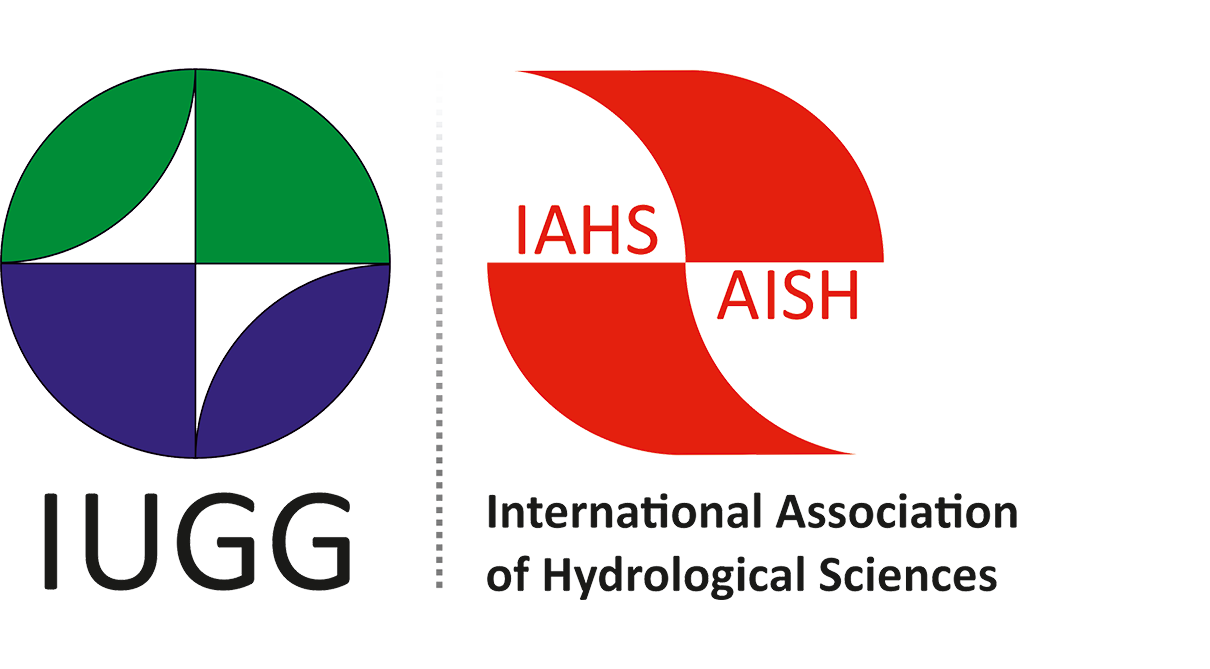THE 2021 TISON AWARD GOES TO Svenja Fischer (Germany) and Philipp Bühler (Germany)
Svenja Fischer, Andreas Schumann & Philipp Bühler (2019) Timescale-based flood typing to estimate temporal changes in flood frequencies, Hydrological Sciences Journal, 64:15, 1867-1892, DOI: 10.1080/02626667.2019.1679376
Citation from Attilio Castellarin, Editor-in-Chief of Hydrological Sciences Journal on behalf of the Jury of the 2020 Tison Award.

Left to right: Berit Arheimer (IAHS President), Svenja Fischer (on behalf of the authors), Attilio Castellarin (Editor-in-Chief HSJ) and Christophe Cudennec (IAHS Secretary General)
The Tison Award promotes excellence in research by young hydrologists, and it is granted for an outstanding paper published in any of the IAHS publications in a two-year period previous to the deadline for nominations. Since its establishment in 1982, the Tison award was granted to many young hydrologists, triggering in several cases the achievement of new heights in their scientific careers. The 2021 Tison Award is co-sponsored by the publisher of Hydrological Sciences Journal, Taylor & Francis.
The 2021 Tison award goes to Svenja Fischer and Philipp Bühler for their outstanding paper titled “Timescale-based flood typing to estimate temporal changes in flood frequencies”, published in 2019 in Hydrological Sciences Journal, and coauthored by the recipient of the 2018 Volker medal Andreas Schumann. The 2021 Tison award jury, which I had the privilege to chair, selected this study among a record number of great candidatures, 18 in total, which per se is a great sign in terms of scientific productivity of young members of our scientific community.
The paper addresses flood change detection, attribution and representation through a quantitative framework that differentiates events based on flood typologies and generation mechanisms. By analyzing a detailed flood dataset available for the Mulde river basin, the authors show that the frequency of different flood types has been changing, and particularly so during the last 25 years. Where this modification is significant, it drives changes in frequency, peak flows, and volumes of flood events, altering the frequency of record-breaking flood events as well. The study has scientific implications, providing our community with a sound and quantitative framework for analyzing flood changes, and it also have immediate operational outcomes, contributing to a sounder design flood estimation in gauged and, through a simplified synthetic flood generation algorithm, in ungauged catchments.
Congratulations to the Tison 2021 awardees, and their coauthor for their outstanding contribution to flood change studies. I wish them further scientific success in the many years to come.
Response of Svenja Fischer
It is a great honour and pleasure for me and my colleague Philip Bühler, who unfortunately cannot be here today, to receive the Tison Award from the IAHS. We would like to sincerely thank the selection committee and the IAHS for this award. The news that we won came as a great surprise. I am particularly pleased that this paper was awarded, as the flood typology developed in it laid the foundation for all our further work. The aim of this work was to incorporate deterministic hydrological knowledge into flood statistics in order to improve our understanding of the underlying processes. Through flood typology and type-based statistics, we can gain new insights into the relevance of flood-triggering processes and their interaction in a catchment. This not only helps statistics, as it allows a kind of plausibility check, but also hydrology, as the information contained is extended. We developed this concept together with our project leader and supervisor Prof. Andreas Schumann, who is also co-author of this paper and to whom we owe our greatest thanks. His ideas, many discussions and particularly detailed data analysis made this work possible. With his understanding of the process and his deep knowledge of hydrology, he supported us and always provided new inspiration. We would like to express our sincere thanks for this. We would also like to thank our families and partners who always support us and make the scientific work possible. A final thank you goes to Frances Watkins, who sadly passed away this April. Without her loving, detailed work in the publication and the many supports, this publication would certainly not have come about in this way. We will miss you, Frances!
